Challenges in Healthcare & Insurance for the 40+
In the last ten years, healthcare changes have deeply affected those parents over 40. Clinicians used to build strong patient relationships but are now limited to short visits due to operational costs, leaving them overworked and underpaid. Insurance systems control access and prices, worsened by pharmaceutical companies manipulating treatment availability and costs. These obstacles greatly hinder comprehensive care, especially for those parents over 40 managing health issues.
Why Everything Feels Harder

If you are a parent entering your 40s, you might notice that everyday tasks require more effort than before. This isn’t just in your head, it’s a natural result of the physical and mental changes that come with aging.
Physical Changes
Muscle Mass and Strength
Starting in your 30s and speeding up in your 40s, you will experience a natural drop in muscle strength and mass. It’s not just about looks—this decline impacts our ability to do everyday tasks easily, like carrying groceries or managing stairs.
Cardiovascular and Respiratory Changes
As you age, your heart and lungs experience subtle change. The heart may not pump as strongly as it used to. Similarly, your respiratory system also changes, leading to a gradual decline in lung capacity. This makes heavy tasks feel more challenging due to reduced ease in breathing.
Flexibility and Mobility
Joints and tissues also become less flexible and springy, which can make moving around harder. Changes in collagen in tendons and ligaments, along with less cushioning in your joints, make you feel stiff and limits how easily you can bend or stretch.
Mental Changes
Perception of Effort
Tasks that used to feel easy might seem more tiring as you age. This shift happens because your brain processes effort differently with age. Simple activities might feel more exhausting, making everyday tasks a bit tougher.
Motivation and Drive
Managing work, family, and personal hobbies makes it tough to fit in exercise. With so much on your plate, it’s harder to find the motivation and time for workouts or even to play with your kids. This adds to the feeling that staying active is more challenging as you age.
Overcoming Myths
As you age, misconceptions about health and well-being often clouds understanding. These myths, shaped by societal beliefs and misinformation, create unnecessary worries about aging. Here are the myths you should avoid:
The Myth of Aging Equals Decline
While aging is natural, it doesn’t always mean a decline in vitality.

The Myth of You Can’t Teach an Old Dog New Tricks
The belief is simply false as the brain stays adaptable throughout life, allowing for continuous learning.

The Myth of Aging Means Aches and Pains Are Inevitable
While some discomfort may come with age, assuming pain is unavoidable is wrong.

The Myth of Older Adults Should Rest and Avoid Physical Activity
Adults shouldn’t avoid physical activity. Regular exercise promotes strength, flexibility, and mental well-being.

Steps to Start Reclaiming Your Health
To empower you throughout the aging journey, adopting proactive health measures becomes essential. Here’s a guide to reclaiming well-being:
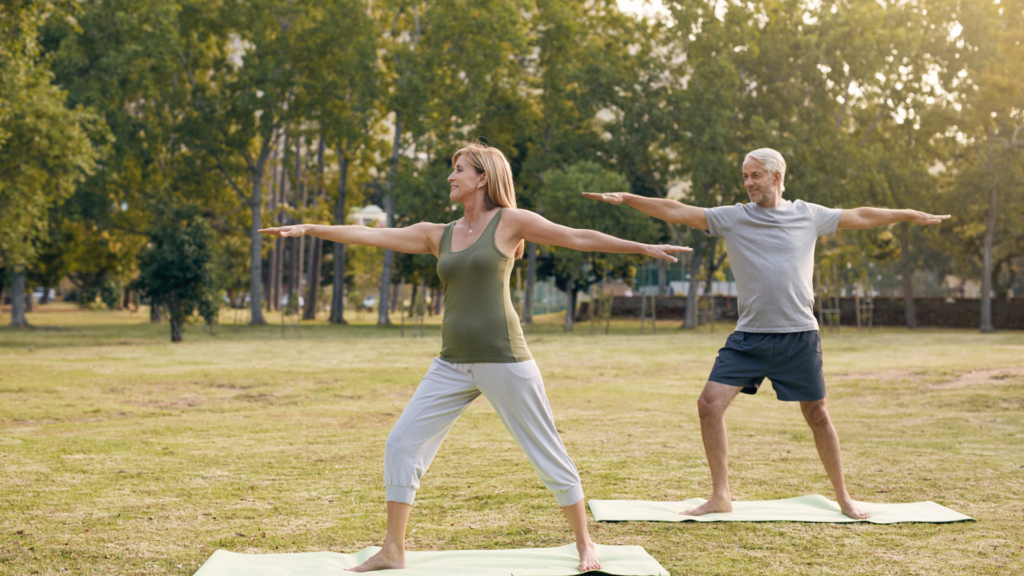
Assess Your Health: Start with a comprehensive evaluation by healthcare experts to understand your baseline health.
Embrace Activity: Perform regular physical exercise, strength training that boosts overall health.
Prioritize Nutrition: Opt for whole, unprocessed foods, maintain balanced portions, and ensure hydration for better health.
Seek Guidance: Consult healthcare professionals, nutritionists, or fitness experts for personalized advice tailored to your needs.
Manage Stress: Incorporate relaxation practices like meditation or mindfulness and prioritize quality sleep for mental well-being.
Stay Social: Foster social connections through clubs, volunteering, or family time for emotional well-being.
Stay Consistent: Sustainable habits, not quick fixes, yield lasting results; commit to gradual and impactful changes.
Addressing Physical Limitations
Navigating physical limitations at 40 and beyond demands tailored strategies for managing discomfort and unlocking movement potential. These methods empower individuals to transcend barriers hindering their activity and stay active.
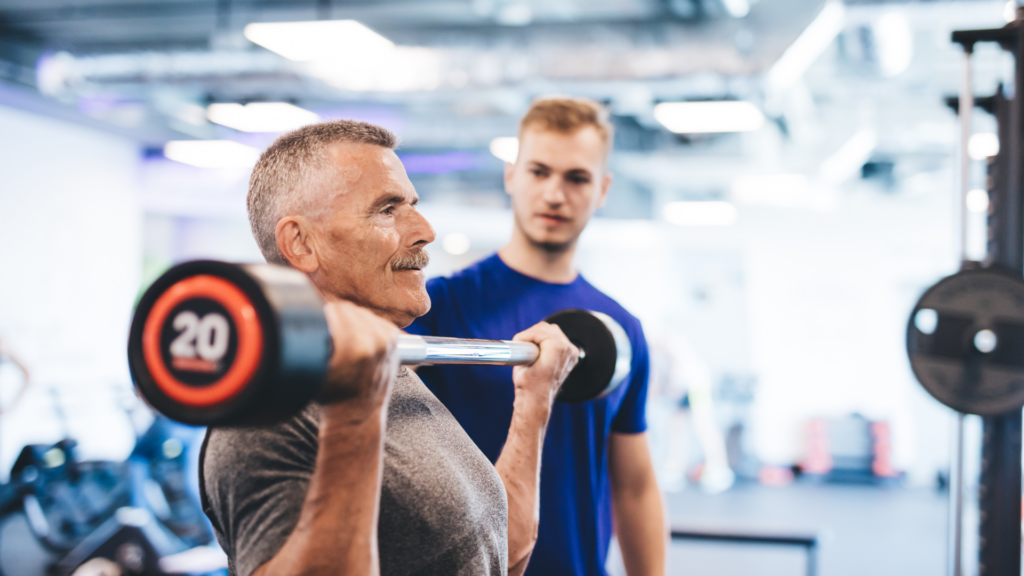
Professional Guidance
Seek help from fitness experts to create tailored workout plans for flexibility and strength. In some cases, they can help with medical interventions like injections or therapy that can address specific issues that cause limitations.
Functional Movement Exercises
Engage in exercise that mirrors daily movements that boosts strength, balance, agility, and improves functional abilities.
Pain Alleviation with Exercise
Perform targeted exercises to help manage discomfort from old injuries, sedentary habits, or lack of activity to address common areas of discomfort—like low back, shoulder, knee, hip, and ankle pain—through specific exercises and strategies that allow for pain relief and improved movement.
Low Back Pain Strategies
Core exercises, flexibility routines, posture adjustments, low-impact activities, and professional guidance aid in alleviating and preventing low back pain.
Shoulder Pain Relief
Perform foam rolling exercises and techniques that strengthen shoulders to provide relief and enhance stability.
Knee Pain Mitigation
Managing knee discomfort with choosing suitable exercise surfaces, keeping active, minding sleeping positions, and selecting appropriate footwear.
Hip Pain Relief
You can use a foam roller for TFL and glute muscles, coupled with targeted stretches and strengthening exercises to help alleviate hip discomfort.
Ankle Pain Strategies
Performing foam roller exercises can relieve tension in calves and shins, easing persistent ankle pain and enhancing flexibility.
How To Find the Right Exercise Program
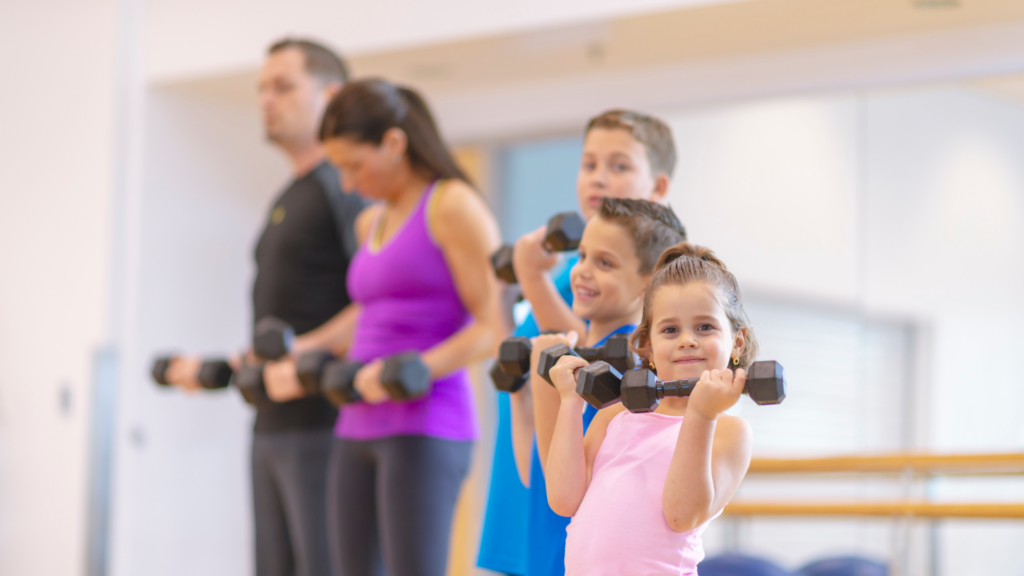
Starting an exercise routine at or after 40 is empowering, but choosing the right program and gym can be overwhelming. Follow this guide to help you navigate fitness options, ensuring a tailored regimen for your overall health.
Define Your Goals: Clarify your fitness aspirations, to set the foundation for your fitness journey.
Choose the Right Program: Consider your lifestyle and physical condition when selecting exercises.
Find the Perfect Gym: Look for an inviting environment that aligns with your personality, equipment variety, and available classes.
Consult Experts: Consult fitness professionals or trainers specializing in adult fitness for personalized workout plans.
Try Trial Periods and Assessments: Take advantage of trial periods or assessments offered by gyms to see if it fits your needs.
Set Realistic Goals: Set achievable goals and timelines, emphasizing consistency and patience for long-term success.
Nutrition That Makes it Easy to the Take the Weight Off the Scale
To achieve an active lifestyle, consider nutrition beyond the scale, prioritizing sustainable changes for vitality and energy. Focus on:

Quality Nutrition: Shift the focus from numbers to nourishing your body with nutrient-dense meals.
Balanced Eating: Understand the importance of macronutrients and balance for overall health and wellness, not just weight management.
Mindful Eating: Learn mindful eating practices for better food choices, portion control, and a mind-body connection during meals.
Overcoming Challenges: Explore strategies to navigate common hurdles like stress eating and time constraints to maintain dietary integrity.
Sustainable Habits: Embrace long-term changes in eating patterns for lasting health and vitality.
Community Support: Join a supportive community for shared experiences and mutual encouragement on your nutrition journey.
Effective Meal Plans: Access practical meal plans and nutritious recipes tailored to different tastes and dietary preferences for enjoyable and easy healthy eating.
Weight Management Strategies: Explore strategies for calorie reduction, cutting carbs, and distinguishing between good and bad fats for sustained weight loss and maintenance.
Daily Routine to Keep your Mobility and Increase your Flexibility
As you reach 40, maintaining mobility and flexibility is crucial for an active lifestyle. Incorporate this daily stretching routine that can significantly enhance overall well-being.
Morning Wake-Up: Start the day with gentle neck rotations, shoulder rolls, and torso twists to alleviate stiffness and prep the body.
Midday Desk Breaks: Counteract sedentary strain with seated leg extensions, hip flexor stretches, and wrist flexor stretches to target areas affected by desk work.
Evening Relaxation: Focus on static stretches for major muscle groups like quadriceps, hamstrings, and calves. Wind down with gentle yoga or deep breathing exercises for relaxation and better sleep.
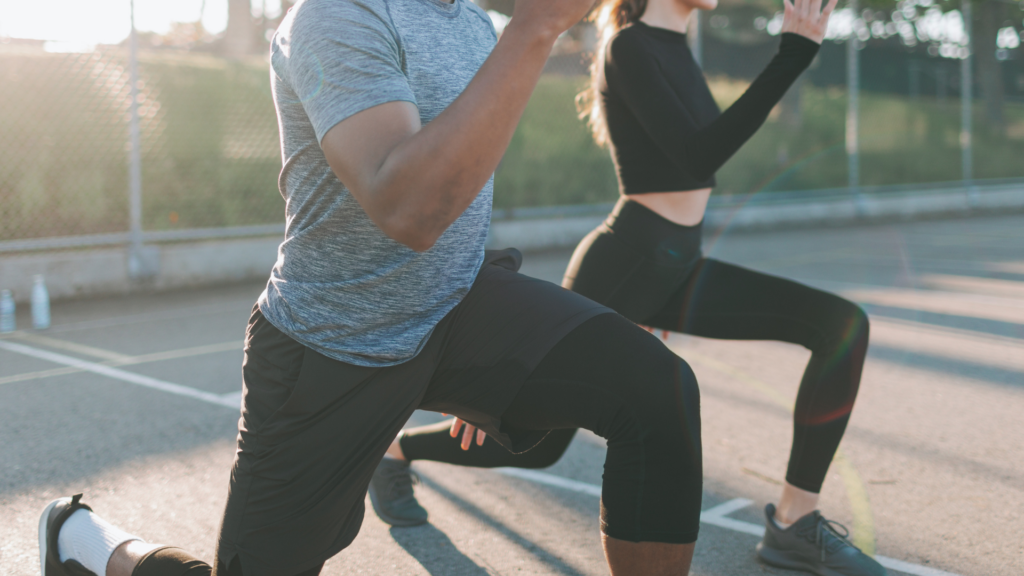
Additionally, incorporate these exercises into your routine for improved flexibility and mobility:
- Arm Raise and Spinal Movements: Focus on arm raises, spine flexion and extension to increase range of motion and spinal flexibility.
- Toe Touches and Deep Squats: Work on leg, hip, and spine mobility by practicing toe touches and deep squats with attention to posture and muscle engagement.
- Shoulder Extension and Wrist Mobility: Gradually increase shoulder extension and work on wrist mobility for overall upper body flexibility.
Remember, consistency is key. Practice these exercises daily, gradually increasing intensity, and respecting your body’s limits to avoid injury.
Habits to Keep You Winning Each Day and Give You Energy To Keep Up With Your Kids
To keep up with your kids and maintain high energy levels, adopting simple daily habits can make a huge difference. Here are some easy yet impactful routines to boost your vitality and match your kids’ lively pace:
Bedtime Rituals: Wind down before bed with calming activities and avoid screens and stimulating tasks an hour before sleep.
Sunlight Exposure: Spend 20-30 minutes in natural light daily, especially in the morning.
Gratitude Practices: Journal or acknowledge three things you’re grateful for daily.

Mindfulness and Meditation: Practice mindfulness or meditation to reduce stress and enhance mental clarity.
Physical Activity Breaks: Take short walks or do brief exercises throughout the day.
Quality Family Time: Prioritize bonding activities with your family, fostering joy and emotional well-being.
Regenerative Medicine That Has Been Proven To Make You Look And Feel 10 Years Younger
Regenerative medicine offers proven ways to help you feel and look younger. Utilize the following methods to keep you active, even as an adult.
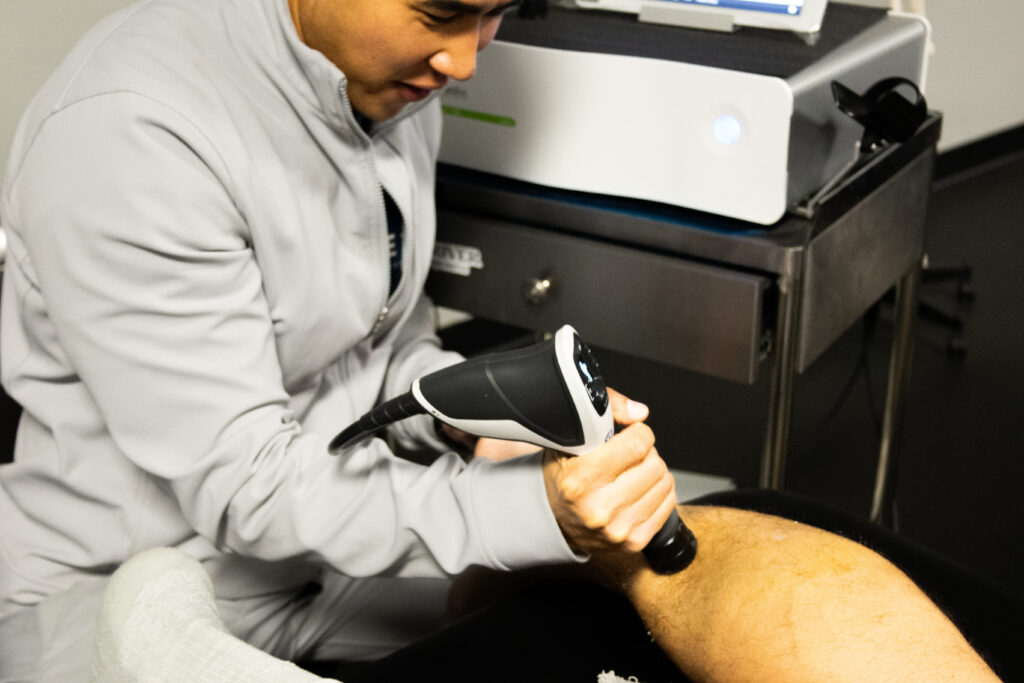
Powerful Supplements: Tailored supplements like creatine and whey Protein support cellular regeneration, muscle repair, and overall vitality. They enhance mental and physical performance, providing essential nutrients for a busy adult life.
EPAT (Shockwave Therapy): This non-invasive therapy uses sound waves to accelerate healing for musculoskeletal issues, reducing recovery time significantly. With a high success rate and minimal side effects, EPAT offers relief for chronic pain or sports-related injuries, facilitating an active lifestyle.
Sauna Therapy: Beyond relaxation, saunas aid in detoxification, skin health, and cellular rejuvenation. They reduce stress, improve cardiovascular health, and leave you feeling rejuvenated after each session.
Cold Tub Therapy: Cold-water immersion triggers physiological responses that reduce inflammation, boost metabolism, and aid in the anti-aging process.
These methods within regenerative medicine offer holistic benefits beyond aesthetics, unlocking the secrets to a youthful, active, and energetic life.
Conclusion
If you’re a parent in your 40s or older, this guide is tailor-made for you! It’s all about helping you tackle those age-related pains and feeling as lively as if you were a decade younger, with an active life that’s pain-free and full of energy. By following this guide, you can go beyond just feeling better physically but it can completely transform you and make you feel and appear younger. It’s a proactive way to regain that zest for life and cherish moments with your children without age being a barrier.
At Myokinetix, we are committed to helping parents over 40 address their ongoing pain and discomfort to enable them to live a pain-free and active life. Driven by a team of experienced professionals and utilizing state-of-the-art technology, our customized approach empowers parents over 40 to reclaim their lives ensuring they can keep up with the pace of life with their children while maintaining their overall well-being.
Give us a call today at 973-585-4990! Book a call with our patient development coordinator here!
